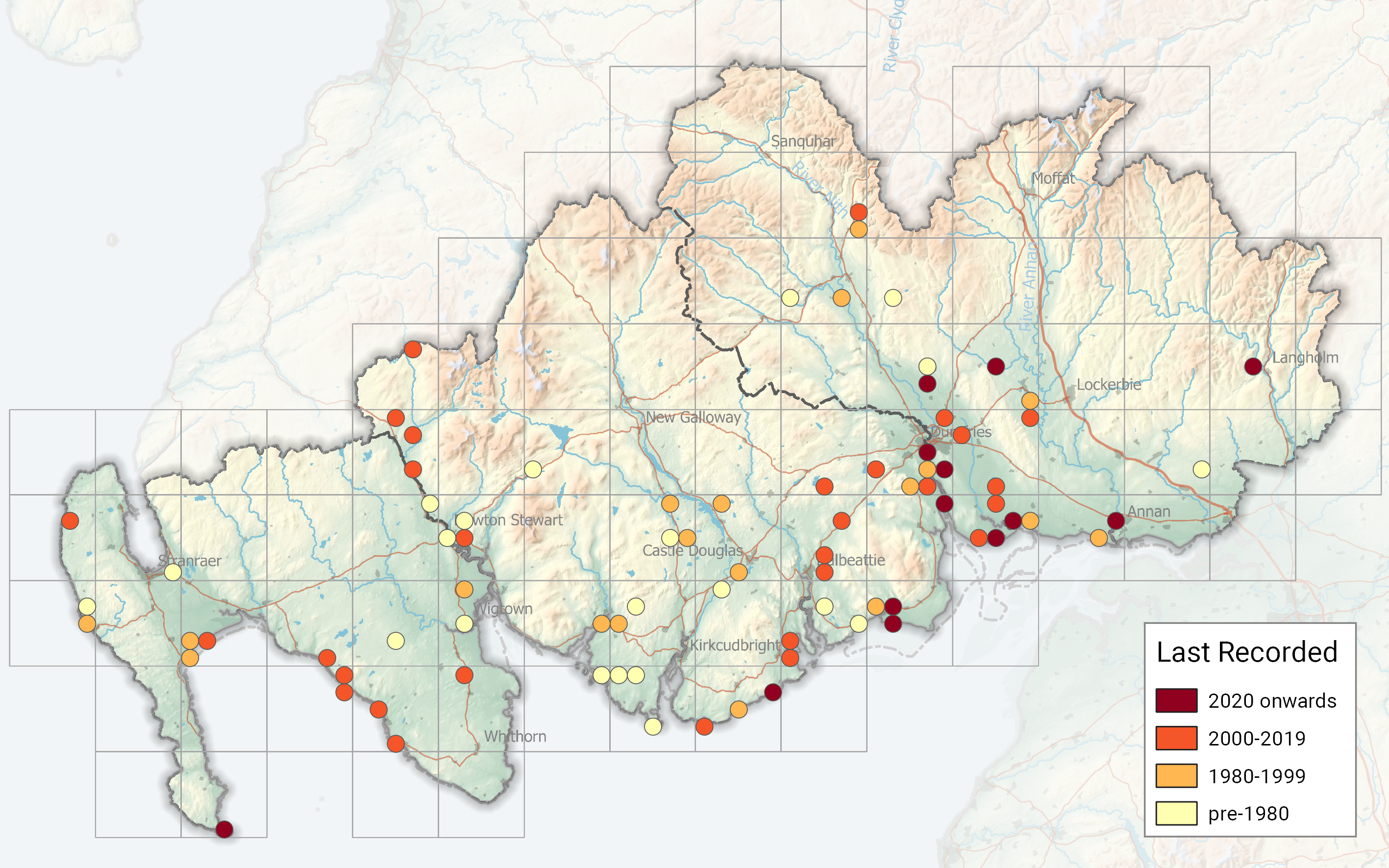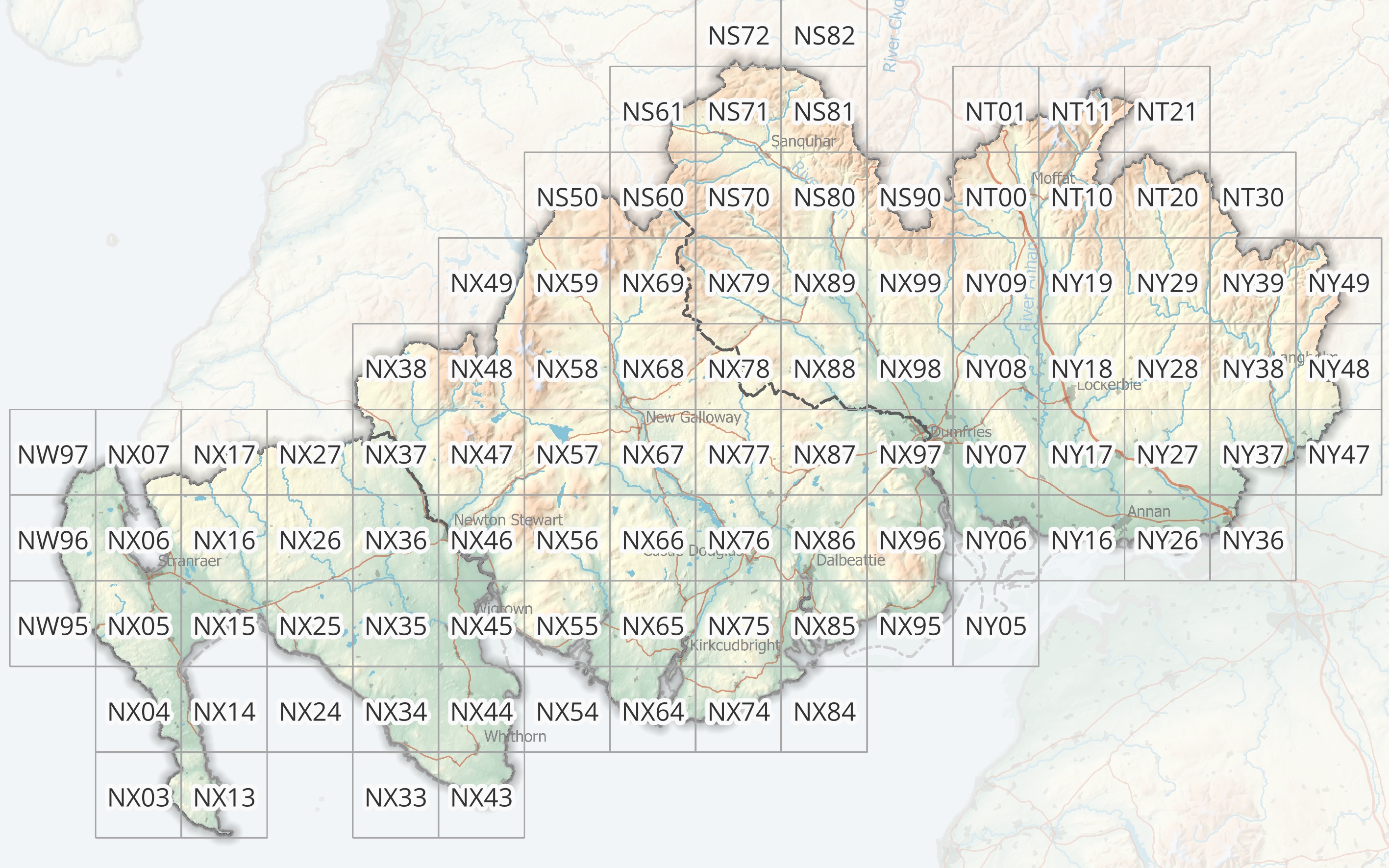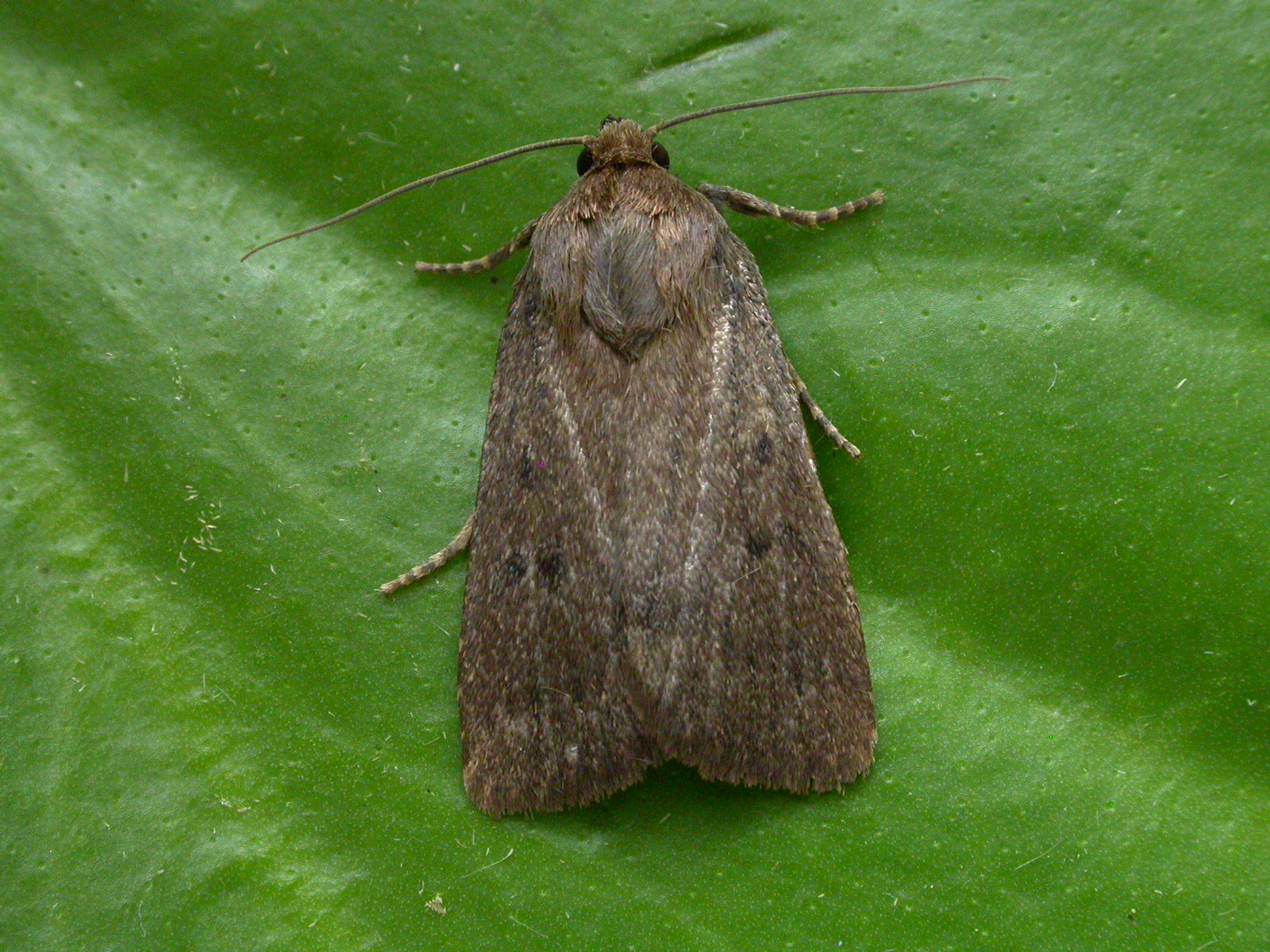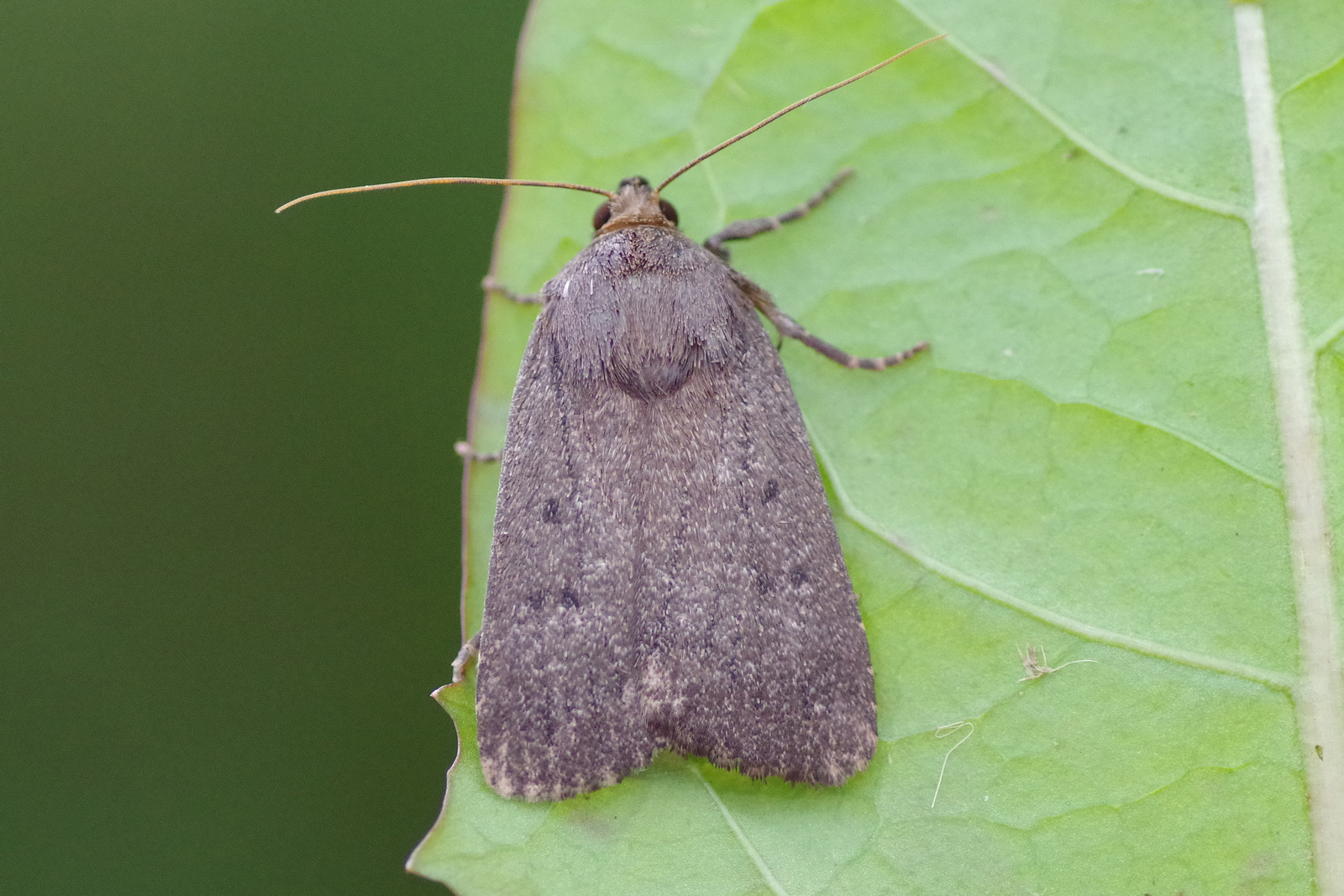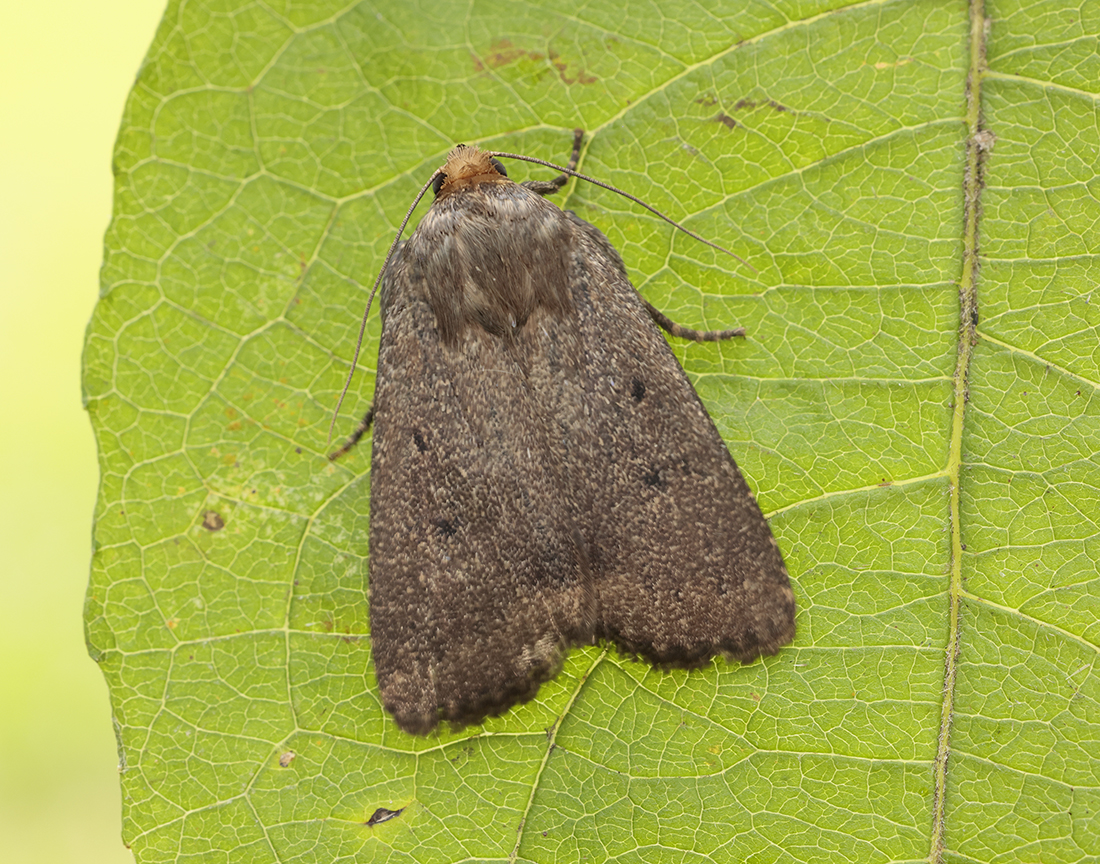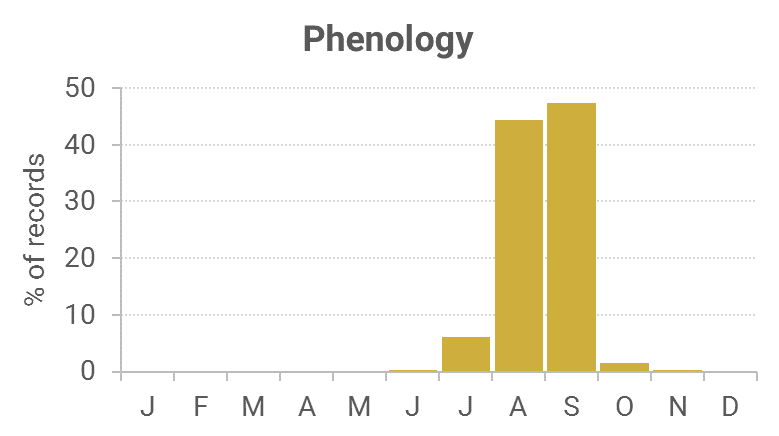Identification
Unmistakable, especially when it creeps away like a mouse.
Recording Method.
Attracted to light, also comes to sugar.
Life cycle
One generation. Overwinters as an egg. Larvae are present April to June, with pupation in a cocoon close to the ground surface.
Larval foodplants
A wide variety of herbaceous plants like teasels, Fennel and Mugwort, but also sallows and hawthorns.
Habitat
Woodland, gardens, moorland, fens and sand-dunes.
History
Gordon (1913) had found it common at sugar in the woods and on the moors around Corsemalzie, Wigtownshire.
William Evans received specimens from Mowat, the Killantringan lighthouse keeper during 1913-15 to aid his insect migration studies. Sir Arthur Duncan (1909-84) during his lifetime had found it at Closeburn, Tynron and Castlehill, Dumfries (all VC72). Archibald Russell (1944) listed it as occurring near Gatehouse of Fleet (VC73) during the years 1942-43.
During 1975-92 there were only twenty-seven records from the Rothamsted stations. It was also trapped on the Hensol Estate in 1983, while in August 1987 Bernard Skinner had found it at Sandhead (VC74).
From 1990 to 2010 two sites dominated the 170 odd records, Kirkton (VC72) and Mersehead RSPB. There are a number of other records from a wide scattering of sites across the region.

